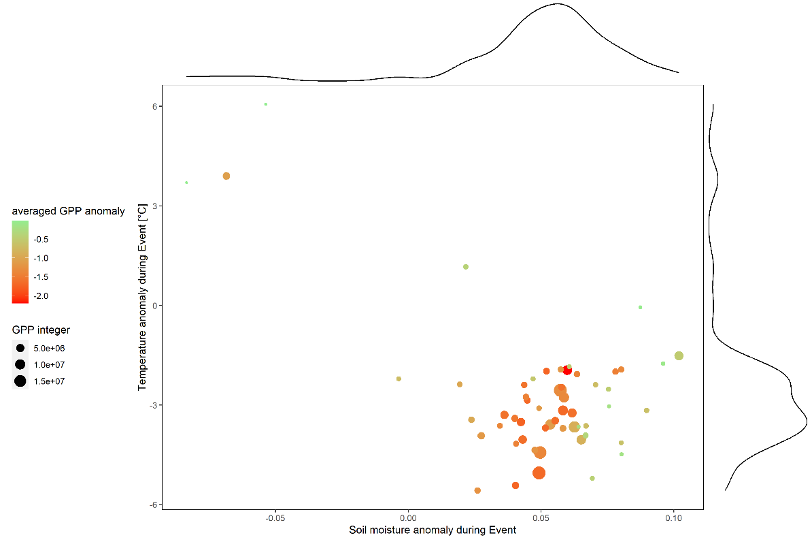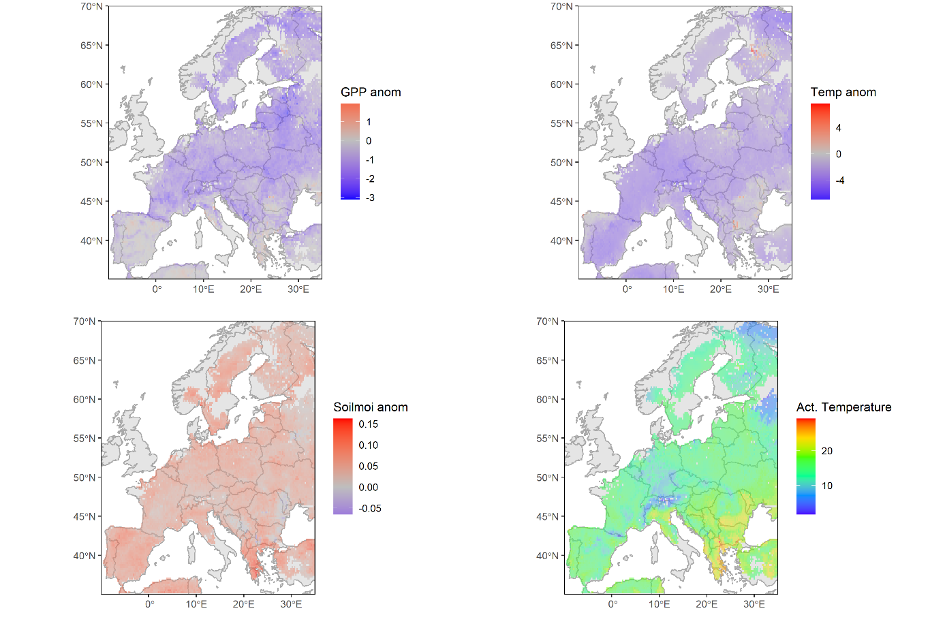Hydroclimatic conditions during extreme events associated with negative gross primary production
Monique Fahrenberg
Climate extremes are predicted to increase in frequency as well as in intensity. The entire earth system is strongly negatively impacted during such extreme events. Vegetation and its productivity play a crucial role in the Earth’s system by producing food and oxygen as well as the sequestration of carbon and providing evaporative cooling. Particularly, vegetation productivity can be impacted during climate extreme events and significantly affect the global and regional carbon cycle. Investigations provide evidence that especially drought and heat events lead to a reduction in vegetation productivity. However, the climate condition during extreme events with a negative impact on vegetation productivity remains unknown. In this research, I focus on multivariate extreme events in Europe with a negative impact on the gross primary production and the observed climate conditions. I demonstrate that colder and wetter climate conditions predominate during extreme events, which provoke negative anomalies in vegetation productivity. Nevertheless, I found that the impact of warmer and dryer conditions during extreme events increases over the summer months. These kinds of extreme events provoked negative and positive impacts on the vegetation productivity, which seems to depend on the affected vegetation type In addition, the actual temperature during the event also seems to play an important role, as I observed negative effects on gross primary production only when actual temperatures above 25 °C were reached. Still, the generally recognized predominant role of drought and heat events with major negative impacts on vegetation productivity cannot be confirmed here. My research demonstrates how sensitive the results are concerning the design and definition of investigations with the purpose of analyzing the impacts of climate extreme events on vegetation productivity. Most of the investigations aiming to analyze such impacts focus on the well-known large heat and drought events that had a negative impact on the vegetation productivity. However, the productivity is stronger reduced during extreme events with colder and wetter climate conditions which have not been sufficiently studied until now.

Figure 1: Represents the averaged anomalies for the extreme events. The points are representing each of the 55 events where the color reflects the averaged GPP anomaly and the size the averaged integral for the extreme event. The curve at the right side of the plot is the distribution of the averaged actual temperature values and at the top the distribution curve for the averaged actual soil moisture values during the extreme events. Both distribution curves show that the majority of the analyzed extreme events have negative temperature anomalies and positive ones in soil moisture.

Figure 2: Averaged raster images for the whole study period from 2003 until 2018, which was affected by the analyzed 55 extreme events. The maps on the top and the lower left represent the averaged anomalies for (clockwise) GPP, temperature, and soil moisture. Blue indicates negative anomalies in the variable, red positive anomaly, and gray reflects normal conditions. At the lower right, the averaged actual temperature for all 55 events is represented. In general, it can be seen that the spatial pattern of the concerning anomalies is similar. When reduced GPP is calculated, usually the same area shows negative anomalies in temperature and positive ones in soil moisture. Negative GPP anomalies during warmer and dryer conditions are only observed during relatively high actual temperature (e.g., >25 °C).
